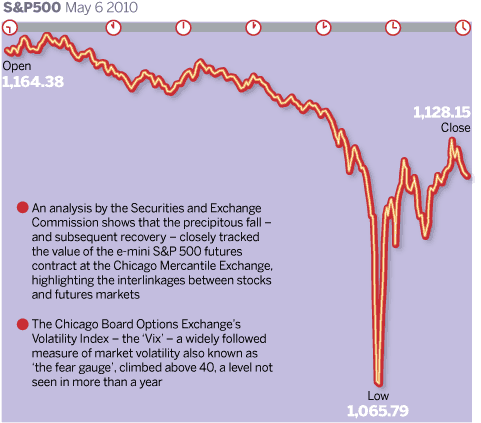There is a fascinating discussion on the FT, looking for possible causes of the flash crash of May 6th:
“During the 2008 financial crisis, trading in the equity markets “continued without a significant hitch. This is in contrast to the liquidity freezes and instability that were evident in other markets (ie, the credit markets) during that time.” But the flash crash confirmed the suspicions of those investors and regulators who had long worried that complicated trading systems, fragmented trading across some 40 different venues, and the enthusiastic embrace of super-fast trading with computers spitting out thousands of buy and sell orders in microseconds, could threaten disaster.
Indeed, the flash crash taps into a debate that has been simmering for years between those who see benefits created by the rapid advance of technology – by lowering barriers to entry for new participants and boosting liquidity for investors who wish to trade – and those who fear it has introduced unknown risks into the system.
The events of May 6 revealed that while getting rid of old-style “specialist” market makers has reduced the cost of trading by narrowing bid-ask spreads, the benefit has come at a cost. Now, no one has an obligation to provide prices for all shares all the time during a trading day, as trading has fragmented across an array of electronic trading venues and traders. The moment the markets grow too risky, many new electronic market makers appear only too willing to head for the exit.”
>

courtesy of FT
Note: The SEC is holding hearings today to review the causes of the crashette of May 6th.
>
Source:
Stock markets: That sinking feeling
Aline van Duyn, Michael Mackenzie and Jeremy Grant
FT, June 1 2010 20:52
http://www.ft.com/cms/s/0/4d26bb24-6da9-11df-b5c9-00144feabdc0.html


What's been said:
Discussions found on the web: